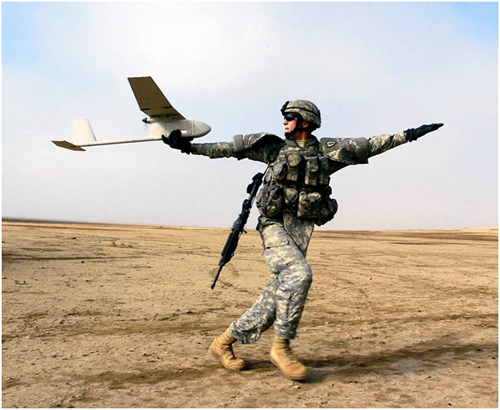 Aerospace and Defence are often treated as part of the same industry but they face very different business challenges. Defence companies need to adapt to shrinking budgets and diverse security challenges whereas commercial aerospace companies are concerned about sustainability and increasingly complex supply chains. However, they face one crucial similarity – their future depends on profiting from continual change.
Aerospace and Defence are often treated as part of the same industry but they face very different business challenges. Defence companies need to adapt to shrinking budgets and diverse security challenges whereas commercial aerospace companies are concerned about sustainability and increasingly complex supply chains. However, they face one crucial similarity – their future depends on profiting from continual change.
New technology, new opportunities and new customer relationships mean companies must become radically more agile and more responsive.
The aerospace and defense industries have witnessed tremendous change in the past few years. Both sectors have seen a rising use of wearables. In the defense sector wearables are increasingly being used in the form of body-worn sensors for training and combat. Wearables are becoming ubiquitous in aerospace as well in the form of head-mounted displays and smart glasses, which are useful in providing assistance to pilots of both commercial and military aircraft. Another technology that is increasing being employed in aerospace is additive manufacturing, which enables the manufacture of complex parts and reduces the material wastage and prototyping time.
Terahertz (THz) Imaging is another technology that is seeing increased usage in the aerospace and defense sectors. THz waves are non-ionizing, and safe to use around human beings, an important reason for their increased usage. They are an emergent nondestructive evaluation (NDE) technique due to their ability to easily penetrate the barriers of most dielectric materials. Smart sensors are increasingly being used in aerospace and defense due their energy efficiency and multi-functionality.
From a materials perspective, lightweight materials, due to their ability to provide a high strength-to-weight ratio, high corrosion and temperature resistance, are seeing increased adoption in the aerospace and defense sectors. A lot of the time these lightweight materials are being used in conjunction with nanocoatings, which enhance their properties. Among their functional properties, are corrosion protection and high mechanical strength, which impart higher durability to the aircraft.
Lithium batteries and microgrids are also seeing increasing adoption in the aerospace and defense sectors.
The aerospace industry is also seeing an increase in the use of cloud computing platforms and XaaS, with innovation in integrated solutions such as flight planning tools and digital flight management systems. Predictive analytics are also being increasingly employed to analyze massive quantities of data and increase safety, security and efficiency.
Mistral has been in the forefront of technology, and at times, ahead of times in implementing newer technologies. Mr. Ramanan JV, Vice President Engineering (Defense), Mistral Solutions briefs here the technical innovations in aerospace and defence and Mistral solutions for this sector.
There have been significant advancements in the Silicon Industry. Most Silicon manufacturers, and Processor manufacturers in specific, have moved to next generation computing by introducing multi-core processing devices as well as peripherals to support it. To keep pace with this, and for effective utilization, interconnect methods have also evolved to provide high to very high speed data communication peripherals and backbones to support it. This allows the designer to implement these technologies to build systems that cater to varying range of computational requirements applications with relative ease and without having to scale hardware in systems.
Eventually, the above technologies will lead to more efficient use of space and weight, power, and significant improvement in performance. The packaging of electronics for use on the Mil-Aero segment will also need to adapt itself to the core objectives of reduced space and power consumptions by evolving innovative ways to build Systems.
There has been a chain of such improvements which now allow the Mil-Aero industry to widen the scope of its implementations plans.
The demands of the industry are now for solutions focusing not just on small form factor, but also on exponential computing. With technology developments, the Mil-Aero segment is now looking forward to versatile and flexible solutions, which will cover multiple and different applications that have a longer lifecycle, maintaining minimum inventory, and having a least intrusive mid-life upgrade path.
While coverage of larger and multitude of applications with high efficiency is inherent with the advancements, life cycle enhancement and thereby optimal inventory maintenance still remains a challenge. A rapid improvement in technology automatically calls for quick changes or adaptation, which is a contra to long life cycle. It also means that the inventory changes would be rapid. These are the challenges that the Industry faces as suppliers to the MIL-Aero segment.

Mistral has been in the forefront of technology, and at times, ahead of times in implementing newer technologies.
As early as 2010, Mistral released systems built around multi-core processors and fully exploited the standards that were being evolved for multi-processor networks and interconnects.
Even today, Mistral is an Industry leader in building systems and applications which exploits the power of new technologies. We have come up with very innovative methods of implementation which has allowed our customers to be highly successful while being well within their schedules. Our innovativeness has helped us to create a niche for ourselves in the MIL-Aero space.
One of the latest developments that Mistral was instrumental in implementing was for a fast track Radar program, where multi core processor technology (960 processor core technology) was applied, with very high speed data communications ability (40 GigE and 10G Fibre optic interconnects). The system was built in record time and was qualified for operations in very harsh environmental conditions. All tests for operations in environmental conditions stipulated by the customer were conducted in the presence of the Mil-Aero agencies and was certified by the Mil-Aero agencies for release and use by the customer.
This allowed the customer to carry out sub-system integration with application implementation well within their own schedules.






